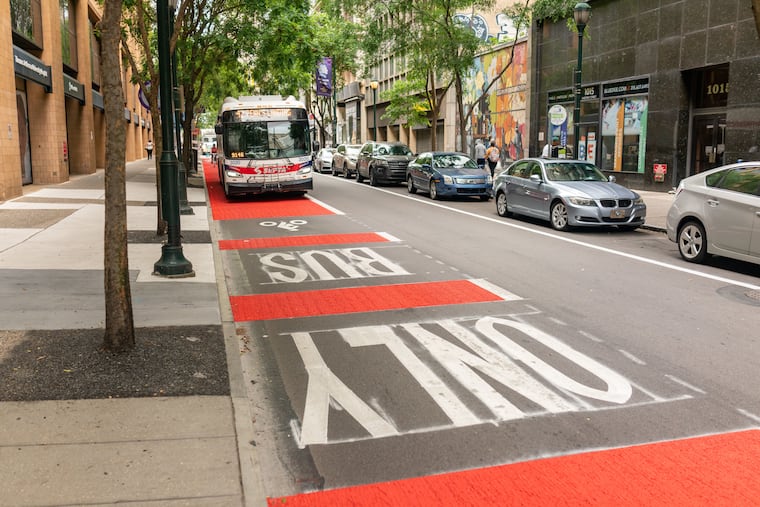Philly is cracking down on drivers who block bus lanes
Drivers could be fined up to $101.

You might want to think twice before you block or drive in a designated bus lane in Center City.
Philadelphia police, SEPTA Transit Police, and officers of the Philadelphia Parking Authority will be watching for no-stopping and no-standing offenses in three bus lanes during a joint enforcement blitz that begins Monday morning.
The lanes are: Chestnut Street between 23rd and Sixth Streets; Market Street between 20th and Sixth Streets; and JFK Boulevard between 15th and 19th Streets.
Cynics may grumble about increased enforcement, but Mayor Jim Kenney and other officials say the primary intent is to remind drivers of bus lane rules rather than rake in cash — though tickets can and will be issued.
Entering the protected street space ”is a bad habit that builds up,” SEPTA spokesperson Andrew Busch said.
What is the penalty?
The fine for the most commonly written congestion-related violations are set at $51, according to the SEPTA Transit Police, but that rises to $101 for the offense of “blocking mass transit.”
Why does it matter?
Simply put, clutter in the bus lanes makes transit buses slower. They bunch up between stops, wreaking havoc with timetables.
Walking on some Center City streets at midday can be faster than taking the bus on the same route. That was especially true before the pandemic. And now, traffic is steadily increasing again, causing buses to become slower and less reliable.
If people have a choice, they generally don’t want to ride slow and unpredictable buses, according to reams of research and common sense.
“Violations reduce reliability and increase travel time,” Busch said.
Avoiding that is particularly important for Center City buses. On an average weekday, Routes 33, 17, 42, and 21 carry about 70% of the passengers they did before the pandemic. SEPTA must rebuild ridership, and a good experience helps.
Has this type of enforcement helped in the past?
The city, PPA, and SEPTA cooperated on bus lane enforcement blitzes in late 2018, early in 2019, and twice more later in the year. Evidence suggests they helped.
For example, in fall 2019, midday travel times on Chestnut Street dropped 6.4% from river to river, shaving an average 2½ minutes per bus trip. On Market Street between City Hall and Seventh Street, bus travel time dropped 4%, saving an average of 30 seconds.
No end date was announced for the current enforcement push.